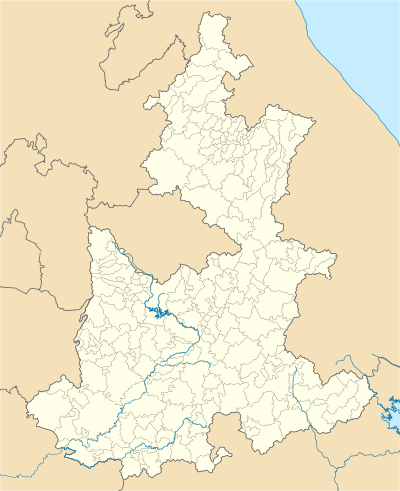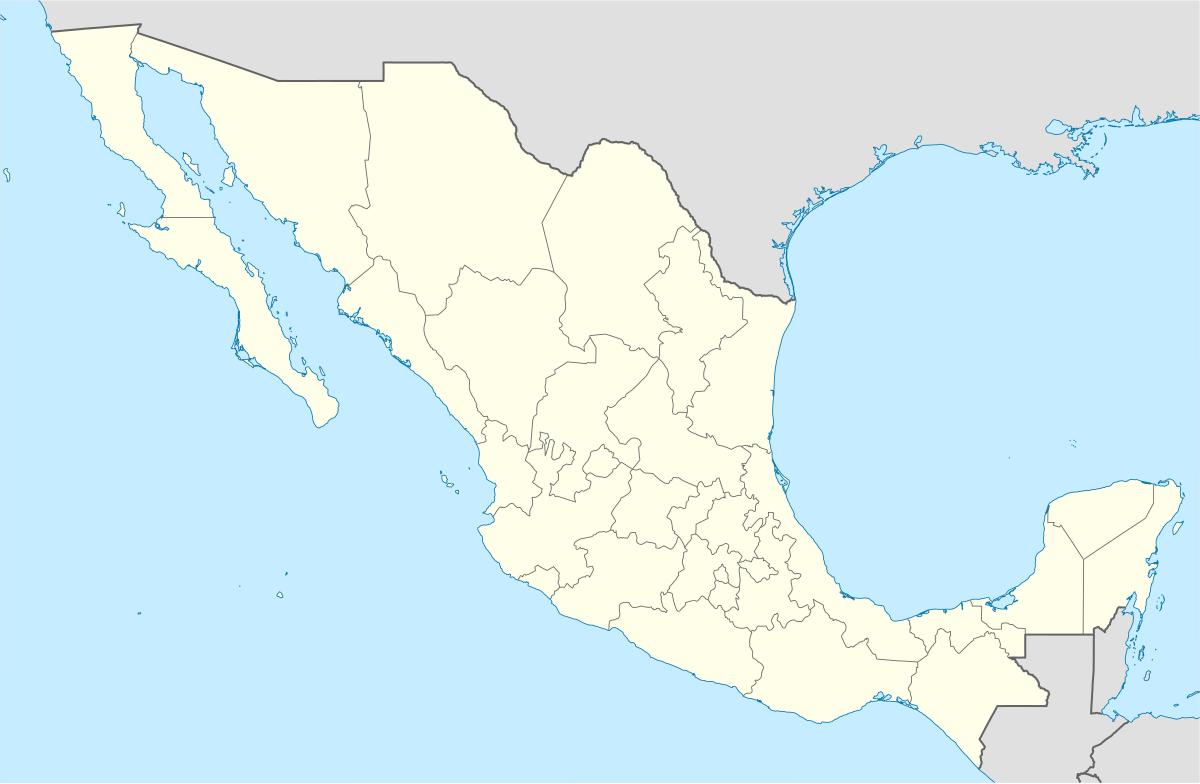Chipilo
Chipilo is a small city in the state of Puebla, Mexico. It is located 12 kilometres (7 miles) south of the state capital Puebla, Puebla, at a height of 2,150 metres (7,054 feet) above sea level. Its official name is Chipilo de Francisco Javier Mina. The people of Chipilo are called chipileños in Spanish, or cipilegni in Venetian and Italian.
Chipilo | |
|---|---|
| Chipilo de Francisco Javier Mina | |
The Church of Chipilo at night | |
 Coat of arms | |
 Chipilo Location in Mexico  Chipilo Chipilo (Mexico) | |
| Coordinates: 19°00′22″N 98°19′50″W | |
| Country | |
| State | Puebla |
| Municipality | San Gregorio Atzompa |
| Population | 3,493 |
History
Chipilo was founded on October 2, 1882, by immigrants from the northern Italian region of Veneto. Most came from the town of Segusino and other surrounding towns in the province of Treviso. These immigrants arrived in Mexico in search of fertile land, leaving behind the poverty that was plaguing Veneto at that time. Most of them took up cattle raising, and the dairy products of Chipilo became famous in Puebla and other regions in central Mexico. Some maintain a derived Venetian dialect (part of Italian language). They fiercely defended themselves from the attack of Mexican revolutionaries in 1917[1].
Although the city of Puebla has grown so far as to almost absorb it, the town of Chipilo remained isolated for much of the 20th century. Thus, the "Chipileños", unlike other Italian immigrants that came to Mexico, did not blend into the Mexican culture and retained most of their traditions and their language. To this day, most of the people in Chipilo speak the Venet or Venetian dialect of their great-grandparents. The variant of the Venetian dialect spoken by the Chipileños is the 'northern Feltrino-Bellunese'. Surprisingly, it has been barely altered by Spanish, as compared to how the dialect of the northern region of Veneto has been altered by Italian. Given the number of speakers of Venetian, and even though the state government has not done so, the Venetian dialect can be considered a minority language in the conurbation of Puebla.
In 1982, the townspeople of Chipilo celebrated the 100th anniversary of the foundation of the city along with visitors from the Veneto region. In this celebration the city of Segusino, Italy, was declared Chipilo's Twin city.
Culture
.jpg)
Chipilo was founded on October 2, 1882 by Italian immigrants from the northern region of Veneto, although there were some people from Piedmont and Lombardy among the founders[2]. They maintained their northern Italian culture.
Chipilo preserves the features, culture and dialect of the Italian origin. For linguists, Chipilo is a treasure: the rare case of a town that is transported to another country, and that keeps its language and customs almost intact, as they were in the 19th century. To his Mexican neighbors, Chipilo is a strange place of sturdy, blond, red-haired, and unusually thrifty and prosperous peasants.In the streets there are no children playing 'cascaritas', nor police officers; There are no pints or election banners, no trash, and no grocery stores on every corner. There is a Salesian convent, three schools, the Casa de Italia, a library, the presidency, a sausage, cold meat and cheese shop, and a couple of cafes. There are 2 Banks, a fleet of relatively new cars, concrete paved streets, and stables and carpentry in the backyard of each house. It is the town of the "güeros" (local nickname of 'Italians'), 2,700 inhabitants, descendants of the 424 immigrants who arrived in 1882. While many of the Mexican neighbors lack modern services, all of the Chipilenos have houses with water, drainage, electricity, and education.Eduardo Montagner
Most of them came from Segusino[3] and surrounding villages in the provinces of Treviso and Belluno, like Quero, Valdobbiadene, Feltre and Maser. In this sense, the Italian immigration to Chipilo differs from elsewhere in Latin America, but it resembles the agricultural regions of Argentina, areas where most immigrants come from the regions of Central-Southern Italy.
People
- Eduardo Montagner Anguiano, writer.
- Martín Stefanonni Mazzocco, politician.
See also
- Chipilo Venetian dialect
- Italian Mexican
References
- La battaglia per difendere Chipilo. (p. 7) Archived 2007-12-17 at the Wayback Machine
- Italiani a Chipilo (in Italian).
- Publicaciones del municipio de Segusino sobre Chipilo (in Italian)
- "Archived copy". Archived from the original on 2015-07-15. Retrieved 2014-12-17.CS1 maint: archived copy as title (link)
- http://es.db-city.com/M%C3%A9xico--Veracruz-de-Ignacio-de-la-Llave--Huatusco/
-
- //es.db-city.com/Italia--Trentino-Alto-Adigio--Trento--Trento/